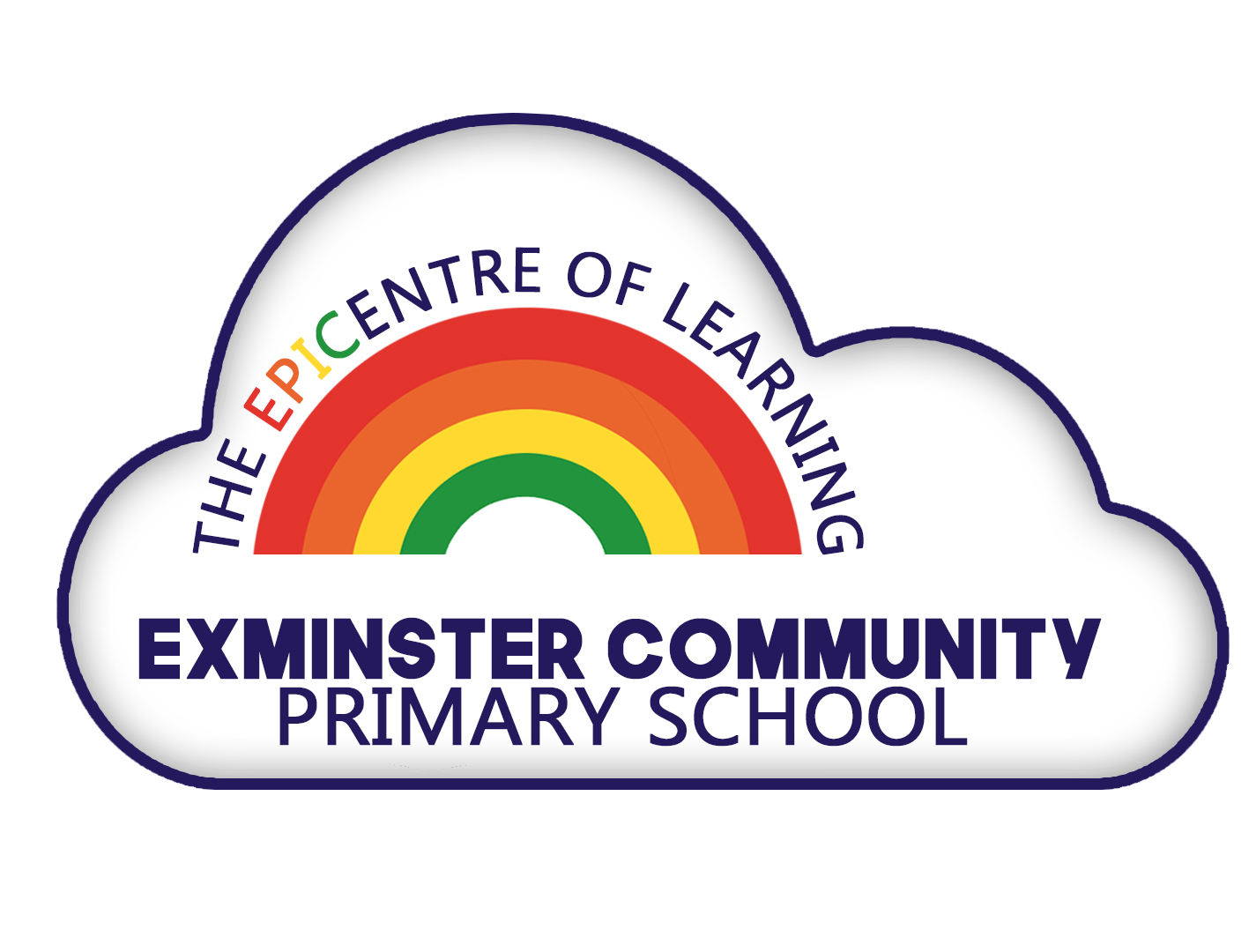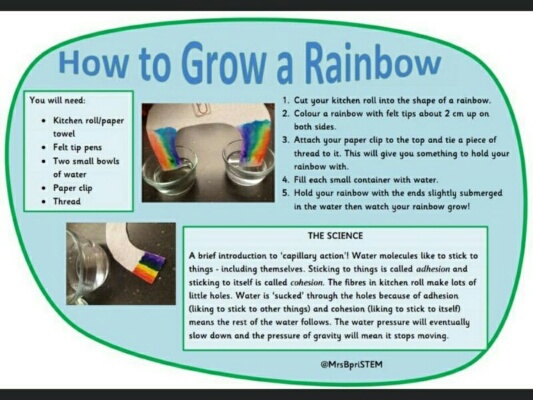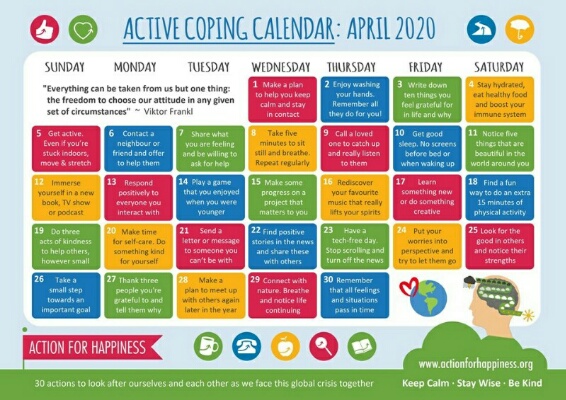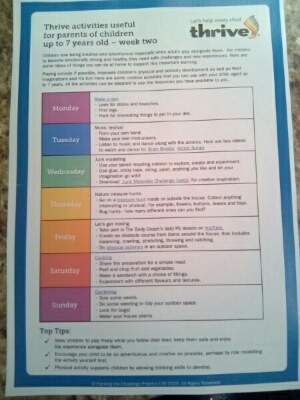Have you tried making mosaics? Choose images from magazines, catalogues and newspapers, cut them into small pieces and stick them to paper to make a collage or mosaic. Take your time and enjoy how your picture grows.
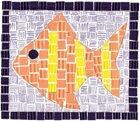
It can be tricky having to stay indoors - why not try something like this? (You do not need lollipop sticks - folded up pieces of paper work just as well.) Write a selection of activities on the sticks (or paper) and put them in a pot - every now and again choose one. There is only one rule - everyone has to join in with the activity chosen. You could even put housework on them!
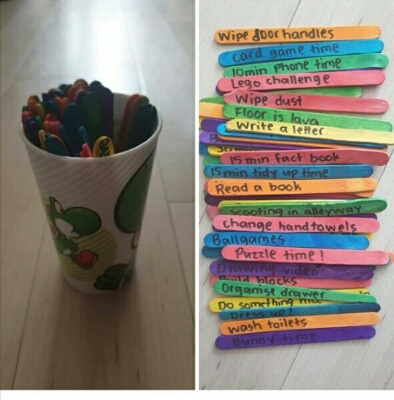
www.youtube.com/watch?v=wf5K3pP2IUQ&t=3s
Cosmic Zen Den is a great way to have a moment of calm in the day.
While the weather is good, why not lay in the garden and look at the clouds? What do the clouds look like? Quietly watch them as they move across the sky.
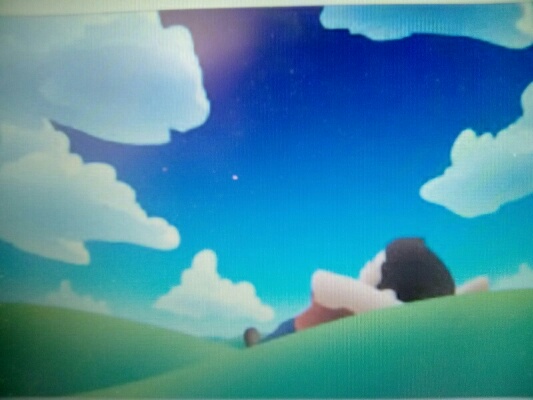
Activities you can do at home!
Try to get a tissue across the room using rolled up newspapers. Do not make it a competition, have fun.
Making dens indoors with cushions, lengths of cloth, sheet, blankets.
Making shapes and sensory play with hands: using gloop (cornflour and water mix) or paint or playdoh or clay.
Do a drawing activity that involves careful observation and attention to detail; provide times for detailed copying or colouring in, to support concentration, absorption and maintaining a quiet focus.
Miming game: play 'What am I doing?' where each person takes a turn at miming a simple everyday action and the other person has to guess what it is.
Junk model-making: relate this to a topic.
Building, knocking down and deconstruction games with Lego, K'nex ,bricks, straws, paper, card, stickers, cardboard tubes, soft balls, cubes, other shapes and textures. Build the tallest tower and ask someone else to knock it down with you.
Play 'Give us a clue' or Connect 4 or any shared game with an emphasis on playing not winning.
Kim's Game - memory game choosing a range of object together and remove one object from tray at a time. Try to remember which object is missing.
Making Mosaics: cut and paste, choose images from magazines, catalogues and newspapers and stick to paper to make a collage or mosaic.
Practise preparing questions for friends and family to make simple surveys e.g. What question could we ask our friend/family member in order to find out something new about them?
Have fun games of making up stories, everyone takes turns to create one sentence at a time.
Involve children in problem-solving exercises: e.g. use creative ways to get children or puppets across a defined section of the room/outside area using resources in the home.
Play hide and seek.
Play a game where your child has to keep looking at your face whilst you pull faces that will make them laugh but they are not to laugh and when they do, swap.
Art: Draw round hand and decorate.
Wrap familiar toys and objects up for each other. Have a guessing game about what the 'presents' are.
Using a variety of objects, ask children to sort them in as many ways as possible, by colour, size, shape etc.
Miming game: play 'What am I doing?' where each person takes a turn at miming a simple everyday action and the other person has to guess what it is.
Decorate biscuits or cupcakes together.
Balancing activities - child lies on back on floor, feet in air and balances a cushion on feet. Add more things.
Papier-mache activities – flour and water paste and newspaper, cover balloons to make masks, cover old shoe boxes, bowls.
Tracing a word, letter, number or pictures on your child's back with your finger, ask them to guess what it is.
Feather football: define two goals at opposite ends of an area the size of a newspaper, use a feather as the 'ball' and each player blows the feather towards their goal through a straw.
Help children to create a 'What I can do' inventory and include everything to reinforce basic bodily movements, basic skills and capacity for imagination, e.g. being a good friend, being able to smile and frown, being able to creating a playlist on an ipod, write a story, help others etc.
Balancing games using bean bags or objects on different body parts (e.g. hats, gloves, socks, balls, balloons.) Try to cross the room without dropping anything.
Funny ways of crossing room – e.g. hopping, sliding, jumping, tiptoeing, crawling; do it as an animal does etc. Take in turns to lead/follow.
Play chasing and ‘being caught’ games.
Do something new with your child, think of activities that stimulate the different senses e.g. listening/dancing to music, look at books, making up stories.
Treasure Hunts: take turns in hiding things for each other to find.
Choose some objects together. The child chooses one (or more) objects to put on a tray under a cover; you have to guess what it is. Then swap.
Take it in turns to imagine you are an animal; move across the room using its gestures and making its noises. Guess which animal.
Copying games that follow changing movements e.g. Simon says.
See how many noises you and your child can make using different parts of your bodies e.g. squeaking, hissing, stamping, and clapping.
Following and copying games; follow the leader. Change leaders often.
Simple experiments: dropping different objects or substances from the same height, creating a carrying frame with given materials such as tape and newspaper to move objects from one place to another. Remember the exploration is more important than the goal.
Play Silly Walks: invite everyone to invent a silly walk across the room. Do not make it into a competition. Say something positive about each one.
Have a picnic indoors- be prepared to imagine and play alongside your child.
Create an adventure trail in the room with cushions and throws, chairs, broom handles. See how many ways you can go along or through it. Make sure it is safe. Do not make it into a competition.
Pamper session: hairdressing time, manicure and pedicure, hand washing and putting on non-allergenic lotion / cream.
Puzzle and board games.
Have some topics written on slips of paper in a hat. Invite the child to pick a topic and then to offer a suggestion or idea linked to it.
Painting Hand prints in paint, bubbles, hand lotion etc.
Play with safe collection of natural objects, string, cardboard boxes, wooden spoons, silver foil, streamers, plastic bowls etc.
Balloon tennis - keep balloon in air without using hands. Specify different body part e.g. on backs, use feet.
An Amazing Meeting: Ask the child to imagine a meeting with someone they admire and would like to meet: Who? Where? How? What would the child look like? What would they be wearing? Say? Do?
Use art media to explore 'if there were no limits, what would be your favourite job/interest and why?’ Ask your child to draw/write about it.
Where in the world? : the child chooses a place name (from a hat or somewhere they know or have heard of): (i) imagine everything about the place: people landscape places to go, food, customs etc. (ii) do a project researching everything about the place using Google maps and Streetfinder.
Remembering and loving your child when they were younger, share pictures and stories from the past.
Observation - come into the room for 3 minutes; memorise different objects in the room. Go out of room and record what you have seen.
Explore making sounds with containers filled with water or sand or earth up to different levels. Create a soundscape or sound track to a piece of film footage or drama.
Put different foods on a tray. Take turns to have a blindfold on. See if you can both guess the food by taste and smell and texture.
Which Superhero am I? Act out or mime different superpowers. Guess who. This can also be done with favourite TV or DVD characters.
Dance together: perhaps teach your child a dance you did when were younger and learn one from them.
Nature colour hunting, how many rainbow colours (purple, blue green, yellow, orange and red) can you find outside? Explore your garden to see how many of the colours you can find within nature. Draw, glue or write down what you discover.
Mindfulness scavenger hunt in your garden, fill a bag with something you see, something you smell, something you hear, something you taste and something you feel.
Write letters to people who would appreciate it.
Make a bug hotel for the garden.
Learn a new fact every day.
This website has some great ideas to support mental well being.
Why not try this?
https://www.elsa-support.co.uk/positive-paper-chains/
Another great cosmic kids to help with growth mindset
the owl and the guard dog https://www.youtube.com/watch?v=so8QN9an3t8
Yes you can - how to stop thinking "I can't ...,"
https://www.youtube.com/watch?v=jzYtNWjQiK0
How to develop super power listening in a mindful way
https://www.youtube.com/watch?v=jJ9zpRAPIuI&t=299s
Mindfulness can be done anywhere and at any time. What does being present mean? It is the power of now.
This link will give you ideas of how you can fit mimdfulness into your day, whenever you have the time.
https://www.youtube.com/watch?v=fmWYD6aHLhg
